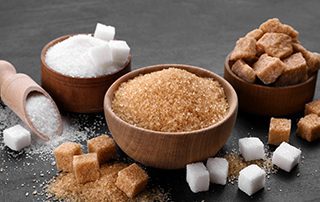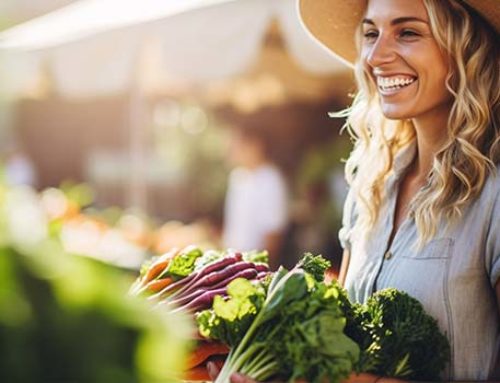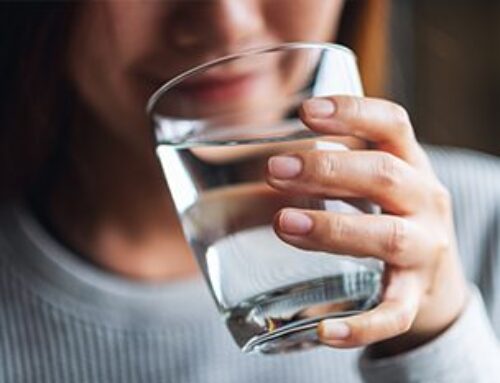
Did you know there are over 60 different names for sugar?
When looking at an ingredient list, it is not just the stock standard “sugar” listing to be aware of. Sugar may be labelled as beet sugar, corn syrup, dehydrated cane juice, fructose, molasses, rice syrup and many many more.
Ingredients will be listed in order according to the quantity within the food, with the highest quantity listed first. With this in mind, food manufacturers may list sugar under multiple different names, within the same product, which gives the impression that the product is healthier than it actually is.
Below is the ingredients list from Pams Oaty Choc Muesli Bars, which contains 5 different sources of sugar (as underlined).
Ingredients: Whole Grain Cereals (Oats (44%), Cereal Crisps (7%) (Wheat, Rye)), Glucose Syrup, compound milk chocolate (12%) (Sugar, Palm Oil, Milk Solids, Cocoa Powder, Emulsifiers (322 from soy, 492), Flavour), Polydextrose (corn), Sunflower Oil (antioxidant 307b), Dried Coconut (Contains sulphites, preservative (223 or 220)), Invert Sugar, Humectant (422), Emulsifier (322 from Soy), Cocoa Extract, Flavours, Caramelised Sugar, Colour (160b).
“No Added Sugar”
This is often promoted on food labels to signify a healthy choice, but the product could still be high in natural sugars.
For example, Keri Juice Co. – Apple Juice is made from apple juice concentrate and marketed with ‘no added sugar’ on the label. The sugar content, as outlined on the nutritional panel, is 7 teaspoons per serve (250ml). This is slightly higher than Coca Cola, at 6.75 teaspoons of sugar per serve (250ml).
Serving Size
The serving size is also a factor to be mindful of. The New Zealand Nutritional Foundation suggests choosing products which have less than 10g of total sugar per 100g.
A popular so-called healthy juice – V8 Tropical Juice is within this recommendation, with 8.6g of sugars per 100ml. However, the serving size of this product (and the realistic amount consumed) is 250ml, pushing up the amount of sugar consumed and giving little credit to the 10g sugar per 100g recommendation.
No refined sugar / Natural sugars
With a lot of attention on favouring unprocessed, whole foods, marketing terms such as ‘no refined sugar”, or “natural sugars” are often used. This does not mean that there is ‘no added sugar’ but rather the sugar is from sources such as honey or maple syrup, and not refined sugar sources.
Sanitarium Cereal Honey Puffs promote “Real NZ Honey” on the front of the box. Whilst this is true, the nutritional information reveals that the product contains 4 different sources of sugar.
Ingredients: Puffed wheat (76%), Sugar, Honey (5%), Corn Maltodextrin, Natural Flavour, Salt, Acid (Acetic), Natural Sweetener (Steviol Glycosides).
Reading the ingredient list and total sugar content from the nutritional panel, reveals far more than the (often misleading) health claims made on the front of the packet.
TIP: It can be a long supermarket shop if you are reading ALL the food labels of each product. Whilst getting to know what brands / products to favour (and what to avoid), choose one or two products per supermarket trip. This week investigate cereal, next week crackers.
Kate Morgan
Tutor – Naturopathic College of NZ





